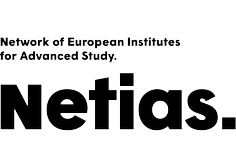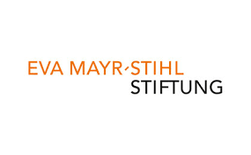Prof. Dr. Evanghelia Stead
Comparative Literature & Book Studies
External Senior Fellow (EURIAS-Programme)
October 2014 - July 2015
CV
Evanghelia Stead is Professor of Comparative Literature at the UVSQ, after having taught in Rheims and Nice Universities. She has been running the inter-universitary seminar TIGRE at the Ecole Normale Supérieure in Paris on illustrated books and periodicals from 2004. She is Agrégée de Lettres Classiques (1994) and holds a Ph.D. (1993) and a HDR (1998) in Comparative Literature from Paris IV-Sorbonne University, Paris. She has studied both classics (Greek and Latin) and modern literatures, is competent in several languages and cultural areas, and has also published literary translations. Her thesis on fin-de-siècle monstrosity and poetics was awarded the Marie-Louise Arconati-Visconti prize (1994). She was also awarded a research stay within the CNRS framework (2005-2007), and has been Visiting Professor at Philipps-Universität-Marburg (2008) and at the Università degli Studi di Verona (2011).
Her research interests are fin-de-siècle poetics and hermeneutics, 19th-20th c. European books and periodicals, Greek and Latin mythical figures in modern European literatures, and The Arabian Nights aftermath as exemplified in the literary tradition of the 1002nd night (modern European and modern Arabic).
Selected Publications
- La Chair du livre: matérialité, imaginaire et poétique du livre fin-de-siècle, PUPS, Paris, 2012.
- Contes de la mille et deuxième nuit : Théophile Gautier, Edgar Allan Poe, Nicolae Davidescu, Richard Lesclide et André Gill, (ed.), Jérôme Millon, «Nomina», Grenoble, 2011.
- Seconde Odyssée, Ulysse de Tennyson à Borges, (ed.), Jérôme Millon, «Nomina»,Grenoble, 2009.
- L’Odyssée d’Homère, Gallimard, «foliothèque», Paris, 2007.
- Le Monstre, le singe et le foetus: Tératogonie et Décadence dans l'Europe fin-de-siècle, Droz, Genève, 2004.
FRIAS Research Project
Faust I in Prints and Book Objects : Germany, England and France (1816-1925)
The project intends to examine Goethe’s Faust I through image sequences and specific book objects in three cultural areas (Germany, England and France) in an extended 19th century (1816-1925), the very century of reproduction techniques that gave birth to the current sense of illustration, in view of a multifaceted cultural history comparing diverse cultural areas, based on stories precisely told by printed materials studied and questioned in context. It is argued that sequential images (engraved series), consecutively informing illustrated editions, have played a major part in making this key play, difficult to grasp, attainable to various audiences, thus adding to its aura. Moreover, a «very stream of images» accompanies Faust through Europe, iconography shaping imagination and thus largely participating in its mythical dimension. The project aims at analysing this intense iconographical reshaping process in the perspective of reading with images and through careful investigation of illustrated books in context, distinguishing between an extensive and an intensive iconography. The former shows the impact of images and motives as they pass from one edition to the other, the latter allows for intense innovation and creative reinterpretation within the extensive flux. The project aims at taking into account both prestigious and popular editions, including skits and caricatures, since even distortions, exaggerations and misrepresentations can acquire cultural and poetic value when transferred from one context to the other. A book and a CD of pictures are planned as an outcome, possibly in more than one language, depending on publishing opportunities.





